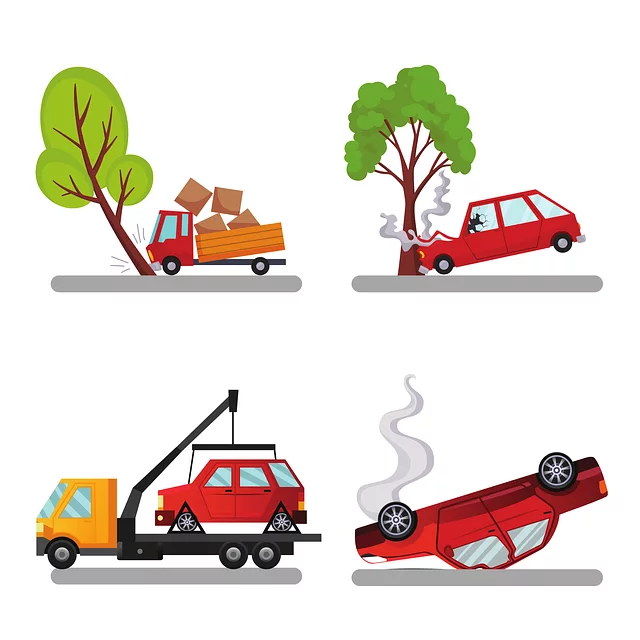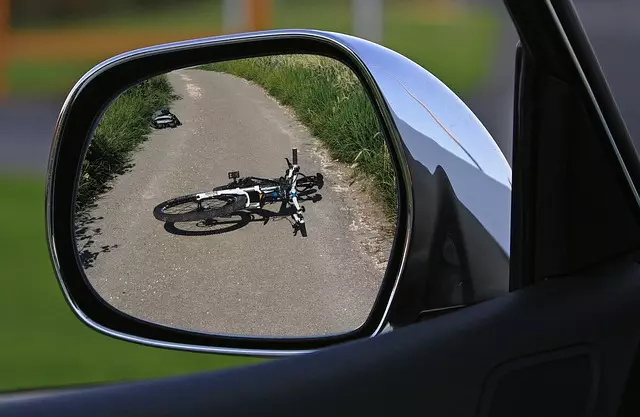Car Accidents & Cell Phone Use NYC: Safety at Risk

In New York City, heavy traffic and bustling streets combine with a growing trend of cell phone dist…….
In the bustling metropolis of New York City (NYC), where skyscrapers kiss the sky and streets buzz with life, an invisible yet potent threat lurks: car accidents involving cell phone use. This modern-day dilemma has become a critical issue, demanding attention from urban planners, policymakers, and technology enthusiasts alike. The intersection of mobile technology and vehicular safety is a complex web that requires meticulous navigation. This article aims to unravel the multifaceted problem, exploring its implications, global reach, technological solutions, and potential future paths. By delving into these aspects, we can gain valuable insights into how NYC, and potentially other urban centers worldwide, can mitigate risks associated with cell phone use while driving and foster a safer transportation ecosystem.
Definition: Car accidents and cell phone use in NYC refer to the phenomenon where drivers engage in mobile communication or access digital media on their handheld devices while operating motor vehicles within the city’s limits. This behavior significantly increases the risk of distracted driving, leading to potential collisions and severe injuries.
Core Components:
Distracted Driving: The primary concern is driver distraction caused by cell phone activities such as making calls, texting, browsing social media, or using navigation apps. These tasks demand visual, manual, or cognitive attention away from the road.
Handheld Devices: Cell phones, smartphones, and other portable electronic devices are the primary tools of this modern-day distraction. While many cities have laws restricting handheld device use while driving, the allure of constant connectivity remains a challenge.
New York City’s Urban Landscape: NYC presents unique challenges due to its dense population, complex traffic patterns, and high volume of pedestrians and cyclists. The city’s narrow streets and heavy pedestrian crossings make driver focus critical for safety.
Historical Context: The issue has evolved alongside the rapid adoption of mobile technology. As cell phones became more sophisticated and widespread, so did their integration into daily life, including driving habits. Over time, concerns about distracted driving have led to increased legislation and public awareness campaigns. In NYC, where traffic congestion and pedestrian-friendly infrastructure are priorities, addressing cell phone use while driving is a nuanced challenge.
Significance: The consequences of cell phone use during driving can be severe, leading to:
The issue of car accidents and cell phone use transcends city boundaries, affecting countries worldwide. Here’s an overview:
| Region | Trends and Statistics | Notable Challenges |
|---|---|---|
| North America | The United States and Canada have some of the highest rates of distracted driving-related accidents. A study by the AAA Foundation for Traffic Safety (2020) reported that 3,142 deaths in the US were attributed to distraction in 2019. | Enforcing laws against handheld device use and educating young drivers about distractions. |
| Europe | The European Union has implemented strict regulations, such as the “Distracted Driving Directive.” Many countries have seen a decline in accident rates due to these measures. | Encouraging public awareness and implementing stricter penalties for repeat offenders. |
| Asia Pacific | Rapid urbanization and increasing smartphone penetration present unique challenges. Countries like Japan and South Korea have made significant strides in raising awareness through media campaigns. | Balancing cultural norms of mobile connectivity with road safety education. |
| Latin America | The region has seen a rise in distracted driving incidents, particularly in urban areas. Brazil and Mexico are focusing on educational initiatives and stricter enforcement. | Addressing the cultural acceptance of cell phone use while driving and improving traffic safety infrastructure. |
The economic implications of car accidents related to cell phone use are far-reaching:
Technological progress has both aided and complicated the issue of car accidents and cell phone use.
Advances:
Advanced Driver Assistance Systems (ADAS): These systems, including adaptive cruise control, lane-keeping assist, and automatic emergency braking, can mitigate some risks associated with driver distraction. Many modern vehicles are equipped with ADAS, but their effectiveness depends on driver attention and proper use.
Voice-Activated Technology: Hands-free devices and voice commands allow drivers to interact with phones without manual manipulation. While this reduces the risk of texting while driving, it still encourages other forms of engagement.
Smartphone Apps for Drivers: Various apps offer solutions like do-not-disturb modes, driving mode features, or accident reporting tools to promote safer driving habits and emergency communication.
Complications:
Smartphone Integration in Vehicles: Some car manufacturers integrate smartphones into their infotainment systems, potentially blurring the lines between legitimate vehicle use and personal device engagement.
Dark Patterning in Apps: Certain apps may employ design tactics that encourage excessive usage, even during unsafe driving conditions. Addressing these practices requires industry self-regulation and consumer awareness.
Addressing the issue demands a comprehensive strategy involving various stakeholders:
Enforcement and Legislation: NYC has implemented laws restricting handheld device use while driving, with penalties for violations. Stricter enforcement and higher fines can act as deterrents.
Public Awareness Campaigns: Educating drivers, especially young and novice ones, about the dangers of distracted driving is crucial. Media campaigns, in-school programs, and community outreach can help change behaviors.
Technology Solutions: Utilizing technology to block or limit certain app functionalities while a vehicle is in motion can be effective. Apps that detect driving activity and disable non-essential features are gaining traction.
Infrastructure Improvements: Designing roads and intersections with safety in mind, including better signage, lighting, and pedestrian/cyclist protection, can reduce the risk of accidents overall.
Data-Driven Analysis: Leveraging data from traffic management systems and mobile devices to identify hotspots for distracted driving can inform targeted interventions.
The future of car safety in NYC could involve a blend of technological, regulatory, and cultural shifts:
Smart City Initiatives: Integrating advanced traffic management systems with real-time data on vehicle and pedestrian movements can optimize traffic flow and identify areas for improvement.
Dynamic Speed Limits: Implementing adaptive speed limits based on traffic conditions and road hazards could enhance safety and reduce accident severity.
Incentivized Behavior Changes: Rewards or discounts on insurance policies for drivers who demonstrate safe habits through app-based monitoring could encourage positive behavior.
Collaborative Efforts: Partnerships between city authorities, technology companies, insurance providers, and community organizations can lead to innovative solutions tailored to NYC’s unique challenges.
Research and Development: Continued investment in research to understand driver behavior, the impact of new technologies, and effective interventions is vital for long-term success.
Car accidents caused by cell phone use represent a complex and evolving challenge for urban centers like New York City. By understanding the global context, recognizing economic implications, embracing technological advancements, and implementing multi-faceted strategies, it is possible to create a safer transportation environment. The journey towards this goal requires continuous collaboration, innovation, and a shared commitment to prioritizing public safety in the digital age.

In New York City, heavy traffic and bustling streets combine with a growing trend of cell phone dist…….

Workplace safety training is legally mandatory in Queens, New York, with strict regulations focusing…….

Car accidents caused by cell phone use are a significant concern in New York City, where heavy traff…….

In New York City, particularly in Brooklyn, heavy traffic and narrow streets present unique challeng…….

Cell phone distractions while driving, particularly in urban areas like New York City (NYC), are a s…….

Car accidents caused by cell phone use are a growing concern in New York City (NYC), with dense traf…….

Cell phone use while driving is a leading cause of car accidents in New York City, resulting in seri…….

Car accidents caused by cell phone use are a pressing issue in New York City, driven by its dense po…….

In New York City, car accidents linked to cell phone use have become a pressing issue due to the cit…….

Construction sites in New York City (NYC) face unique challenges due to heavy traffic and diverse ri…….